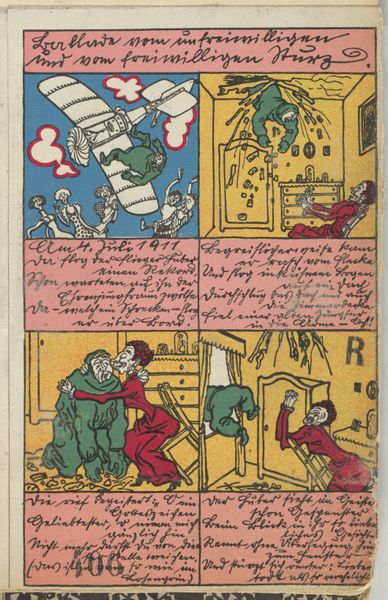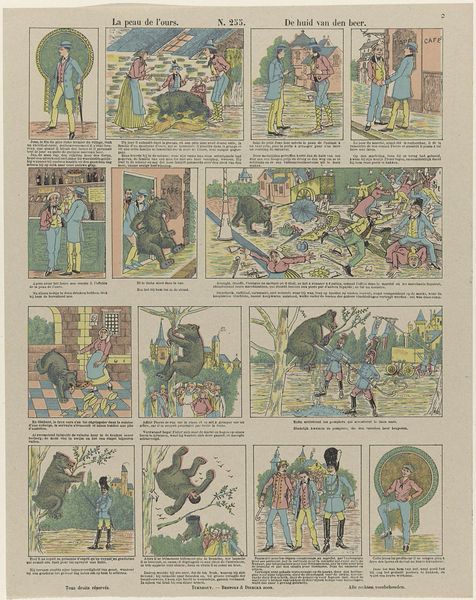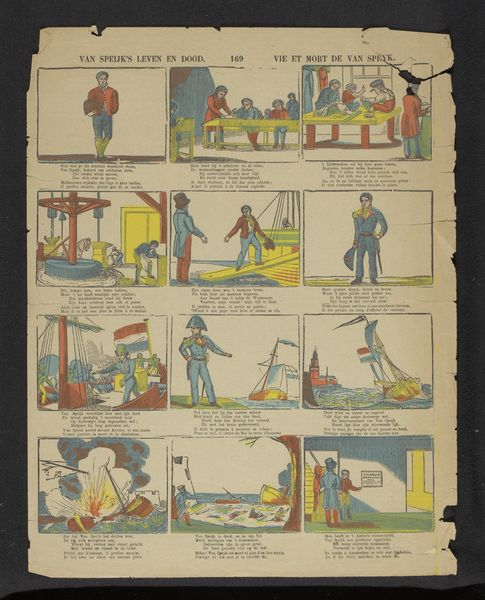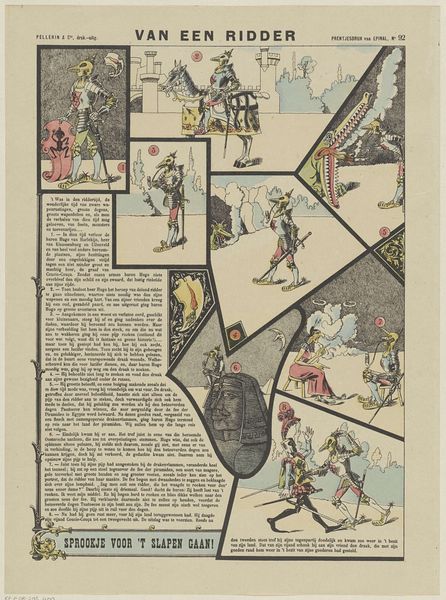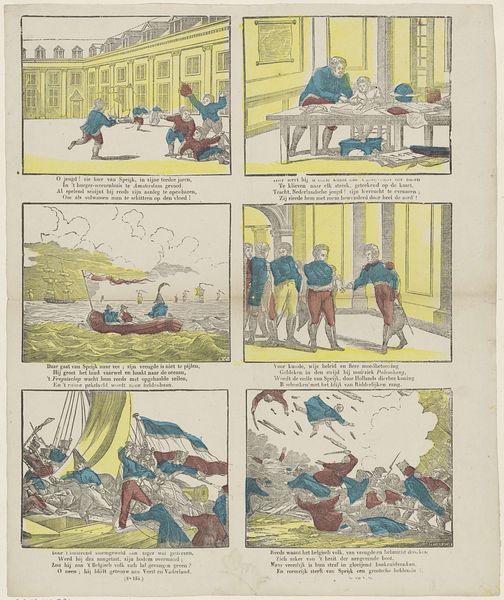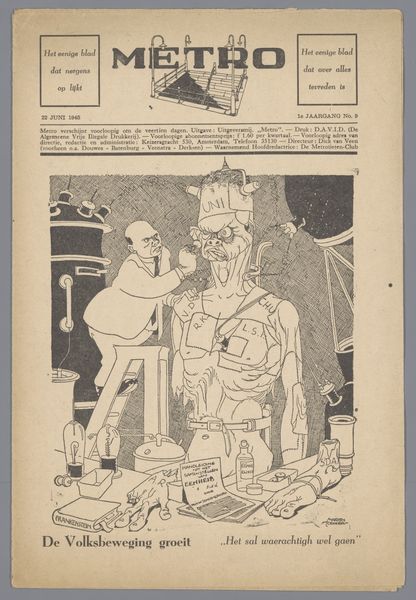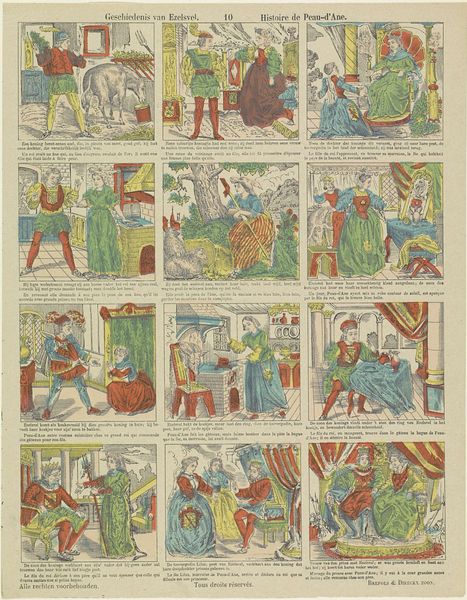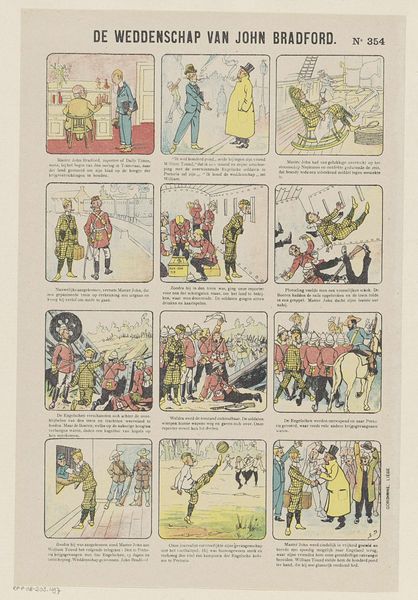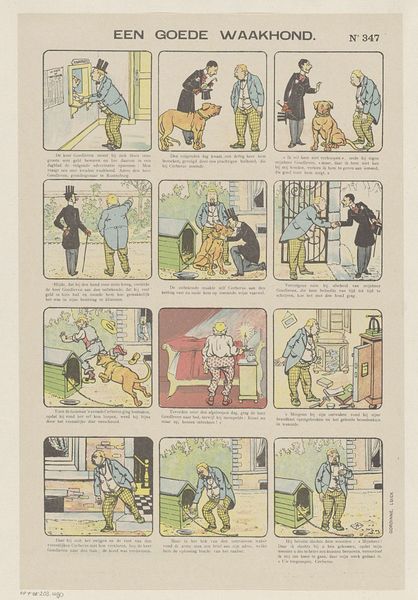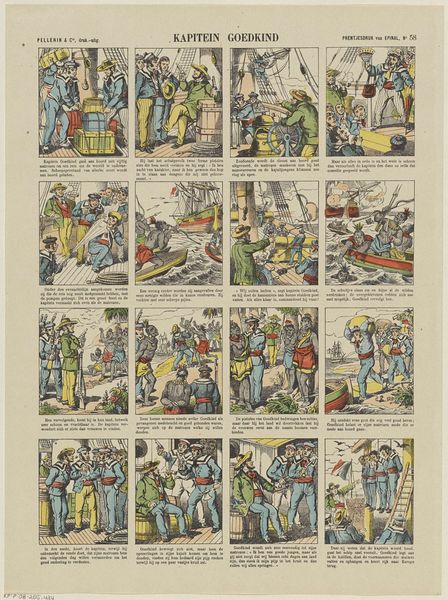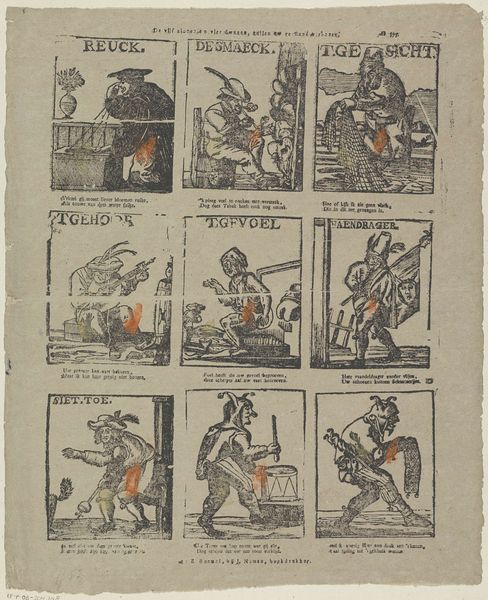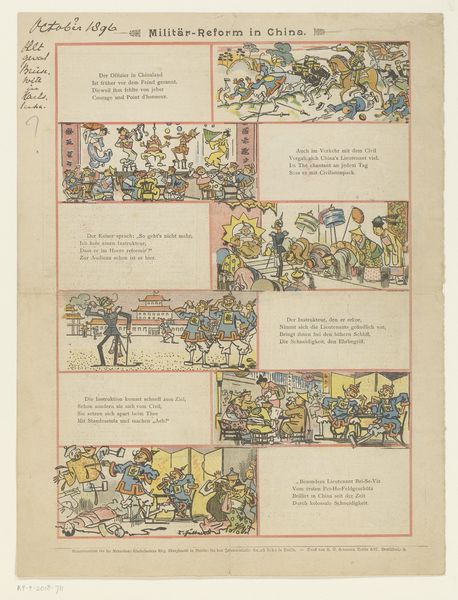
The Blue-Blooded Man and the Devil (Der Blaublütige und der Teufel) 1911
0:00
0:00
drawing, graphic-art, print, etching
#
drawing
#
graphic-art
#
ink painting
# print
#
etching
#
caricature
#
linocut print
#
expressionism
#
comic
#
symbolism
#
history-painting
Dimensions: Sheet: 5 1/2 × 3 9/16 in. (14 × 9 cm)
Copyright: Public Domain
Curator: This print by Moriz Jung, "The Blue-Blooded Man and the Devil" from 1911, certainly grabs your attention. The blocks of color are striking. What's your first impression? Editor: It feels like a comic strip gone a bit mad, perhaps political? I am interested in its use of printmaking. Can you explain it some more? Curator: Yes, it absolutely carries political weight through its very materiality. Consider printmaking's role in disseminating ideas, often subversive ones. Look closely; the textures, achieved through etching and perhaps linocut, show a labor-intensive process intended for mass consumption. How might this conscious choice of materials affect its interpretation? Editor: It's interesting that you point out the materials in relationship to dissemination of ideas, I suppose that by reproducing these with a somewhat cheap form, Jung lowers "high" art. Curator: Precisely! By embracing techniques accessible and familiar to a wider audience, Jung challenges conventional class separations inherent within the established "high art" world. The act of mechanically reproducing images, often associated with craft, elevates caricature into a vehicle for critiquing power. The print demands to be handled, carried, and discussed outside the confines of galleries, where art ownership generally occurs. Does it change your view of it? Editor: I never thought about caricature art pieces and their intended distribution, in this particular case. With that lens in mind, I notice Jung using inexpensive material to circulate radical political notions that otherwise wouldn't spread widely. Thank you, that's incredibly helpful. Curator: The intersection of material and message is crucial to understanding works like this. Remember to think about where something is from, how it came into being, and how art changes our cultural landscapes.
Comments
No comments
Be the first to comment and join the conversation on the ultimate creative platform.
